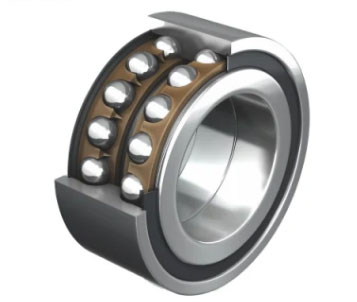Home / News / Spindle Bearing Preload Method: An Overview of Techniques and Applications
Spindle Bearing Preload Method: An Overview of Techniques and Applications
Introduction
Spindle bearings are a critical component in a variety of machines, such as CNC machines, milling machines, and high-speed lathes. They support the spindle, which is responsible for the rotation and precision of the cutting tools. To ensure optimal performance and extend the life of the spindle bearing assembly, it is essential to apply an appropriate preload. This article will discuss the spindle bearing preload method, including its importance, common techniques, and applications.
The Importance of Spindle Bearing Preload
Spindle bearing preload refers to the process of applying an axial load or force to the bearing, reducing internal clearance and creating a controlled level of contact between the bearing elements. This ensures that the bearing operates with precision, stability, and rigidity, which are crucial factors for machining accuracy and tool life. The preload can also help minimize thermal expansion effects and reduce vibrations during high-speed operations.

Common Techniques for Spindle Bearing Preload
Spring Preload Method
The spring preload method involves using a disc spring or a wave spring to apply a constant force on the bearing. This method is suitable for applications with moderate speed and load requirements, as it provides a relatively constant preload regardless of thermal expansion. The spring preload method is simple, cost-effective, and allows for easy adjustments.
Spacer Preload Method
In the spacer preload method, precision spacers are placed between the bearings to create a specific preload. By adjusting the spacer's thickness, the desired preload can be achieved. This method is ideal for high-precision applications, as it provides a consistent preload over a wide temperature range. However, it requires precise manufacturing and assembly to ensure accurate preload.
Hydraulic Preload Method
The hydraulic preload method uses a hydraulic system to apply a controlled pressure on the bearing. This method is highly accurate and adaptable, as it allows for real-time adjustments of the preload during operation. The hydraulic preload method is suitable for high-speed, high-load applications, as it compensates for thermal expansion and provides uniform force distribution. However, it may be more complex and expensive compared to other methods.
Applications of Spindle Bearing Preload
Spindle bearing preload is essential in various industries and applications, including:
CNC Machining: Spindle bearing preload is crucial for achieving high precision and accuracy in CNC machines, as it ensures the stability and rigidity of the spindle assembly during high-speed operations.
Milling Machines: In milling machines, preload is necessary to reduce vibrations and ensure smooth and precise cutting.
High-Speed Lathes: Spindle bearing preload is vital for maintaining consistent cutting forces and reducing tool wear in high-speed lathes.
Aerospace and Automotive Industries: High-precision components, such as turbine blades and engine components, require stringent tolerances, making spindle bearing preload critical for maintaining accuracy and quality.
Conclusion
Spindle bearing preload is an essential aspect of maintaining the performance and longevity of spindle bearing assemblies. By selecting the appropriate preload method and applying it correctly, manufacturers can optimize machining accuracy, tool life, and overall equipment efficiency.
- Previous: Spindle Bearing Preload Torque: Significance, Measurement, and Adjustment
- Next: Spindle Bearing Preload Setting: A Comprehensive Guide to Optimal Performance













